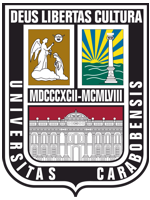Financiación del sector de la educación y la investigación en tiempos de guerra
DOI:
https://doi.org/10.46502/issn.1856-7576/2024.18.04.19Palabras clave:
educación, instituciones de enseñanza superior, presupuesto estatal, sector de la investigación, guerra.Resumen
En el contexto de una guerra a gran escala, surgen nuevas necesidades y problemas en los sectores educativo y científico de Ucrania. El artículo pretende estudiar las características de la financiación de la esfera educativa y científica de Ucrania. En el estudio se han utilizado métodos científicos generales de análisis estadístico y sistematización de los resultados del estudio del estado, la estructura y las características de la financiación de la esfera educativa y científica de Ucrania en condiciones de guerra. El artículo pone de relieve las últimas tendencias en el cambio de las direcciones y enfoques de la financiación de la esfera educativa y científica de Ucrania en el contexto de la guerra. El estudio demuestra la capacidad del gobierno y de las autoridades locales para prestar apoyo financiero a este sector en el contexto de una guerra a gran escala. En general, los gastos en educación y ciencia sólo disminuyeron en 2022, tanto a expensas del presupuesto estatal como de los locales. En cambio, en 2023-2025, el importe de los gastos previstos del presupuesto estatal en educación y ciencia en Ucrania está creciendo. El valor práctico del trabajo radica en poner de relieve la situación y las tendencias de la financiación del sector de la educación a cargo de los presupuestos estatales y locales y en identificar las peculiaridades de la estructura de los gastos en educación de los presupuestos estatales y locales por nivel educativo.
Citas
Agasisti, T., & Bertoletti, A. (2022). Higher education and economic growth: A longitudinal study of European regions 2000–2017. Socio-Economic Planning Sciences, 81, 100940. https://doi.org/10.1016/j.seps.2020.100940
Androniceanu, A. M., Kinnunen, J., Georgescu, I., & Androniceanu, A. (2020). A Multidimensional Approach to Competitiveness, Innovation and Well-Being in the EU Using Canonical Correlation Analysis. Journal of Competitiveness, 12(4), 5–21. https://doi.org/10.7441/joc.2020.04.01
Ansell, B. W., & Lindvall, J. (2015). The political origins of primary education systems: Ideology, institutions, and interdenominational conflict in an era of nation-building. American Political Science Review, 107(3), 505-522. https://doi.org/10.1017/S0003055413000257
Blanco, F. A., Delgado, F. J., & Presno, M. J. (2020). R&D expenditure in the EU: Convergence or divergence? Economic research, 33(1), 1685–1710. https://doi.org/10.1080/1331677X.2020.1756371
Busu, M., Nedelcu, C., & Cadis, A. (2021). An overview of the academic level among EU countries. A cluster analysis approach. In Proceedings of the International Conference on Business Excellence, 15(1), 210–217. https://doi.org/10.2478/picbe-2021-0020
Cantwell, B. (2021). Ideas for theorising the geopolitics of higher education in the global rankings era. In Research Handbook on University Rankings. (pp. 354–365). Edward Elgar Publishing. https://doi.org/10.4337/9781788974981.00038
Celli, V., Cerqua, A., & Pellegrini, G. (2024). Does R&D expenditure boost economic growth in lagging regions? Social Indicators Research, 173, 249–268. https://doi.org/10.1007/s11205-021-02786-5
Chattopadhyay, S. (2007). Exploring alternative sources of financing higher education. Economic and Political Weekly, 42(42), 4251–4259.
Estermann, T., & Pruvot, E. B. (2015). University autonomy in Europe: The scorecard 2015. European Journal of Education, 3, 28-32. https://uned.kneu.edu.ua/wp-content/uploads/6_Estermann.pdf?utm_source=chatgpt.com
Eurostat (2024a). R&D expenditure. https://ec.europa.eu/eurostat/statistics-explained/index.php?title=R%26D_expenditure
Eurostat (2024b). R&D expenditure by source of funds. https://ec.europa.eu/eurostat/statistics-explained/index.php?title=R%26D_expenditure#R.26D_expenditure_by_source_of_funds
Goldrick-Rab, S., & Steinbaum, M. (2014). Redefining college affordability: The economics of financial aid. Review of Educational Research, 88(5), 649–688. https://www.luminafoundation.org/files/publications/ideas_summit/Redefining_College_Affordability.pdf
Hedges, L. V., & Rhoads, C. (2016). The state of the art in educational research. Review of Research in Education, 40(1), 1–27. https://www.ipr.northwestern.edu/documents/expert-cvs/Hedges-L_CV.pdf
Jongbloed, B. W. A., & Vossensteyn, H. (2016). Funding the university: Balancing efficiency and equity. Oxford Review of Economic Policy, 32(4), 576-595, https://doi.org/10.1093/oxrep/grw029
Krstić, M., Filipe, J. A., & Chavaglia, J. (2020). Higher Education as a Determinant of the Competitiveness and Sustainable Development of an Economy. Sustainability, 12(16), 6607. https://doi.org/10.3390/su12166607
Law of Ukraine No. 280/97-VR. “On Local Self-Government in Ukraine” Bulletin of the Verkhovna Rada of Ukraine (VVR) of 15.11.2024. 1997, No. 24, p. 170. https://zakon.rada.gov.ua/laws/show/280/97-вр#Text
Lee, J. J. (Ed.). (2021). International higher education as geopolitical power. In US power in international higher education. pp. 1–20. Rutgers University Press. https://doi.org/10.2307/j.ctv1n6pvs6.3
Lung, M., Moldovan, I., & Alexandra, N. L. (2012). Financing higher education in Europe: issues and challenges. Procedia-Social and Behavioural Sciences, 51, 938–942.
Marginson, S. (2016). The worldwide trend to high participation higher education: Dynamics of social stratification in inclusive systems. Higher Education, 72, 413–434. https://doi.org/10.1007/s10734-016-0016-x
Maringe, F. (2023). The conceptual ‘jungle’of the decolonisation of Higher Education: Contestations, contradictions, and opportunities. In Colonization and Epistemic Injustice in Higher Education (pp. 1-22). Routledge. https://acortar.link/aa9FWg
McGuinness, A. C. (2016). State policy leadership for higher education: Past, present, and future. Journal of Higher Education Policy and Management, 38(5), 495–508.
Ministry of Education and Science of Ukraine. (November 19, 2024). UAH 194.3 billion allocated to finance education and science in 2025. https://mon.gov.ua/news/1943-mlrd-hrn-vydileno-na-finansuvannia-osvity-i-nauky-u-2025-rotsi
Mintz, B. (2021). Neoliberalism and the crisis in higher education: The cost of ideology. American Journal of Economics and Sociology, 80(1), 79–112. https://doi.org/10.1111/ajes.12370
OECD (2022). Financing education: Trends and challenges. Education at a Glance. Paris: OECD Publishing.
Open Budget (2024). Análisis de IMPULSO. Gastos. https://openbudget.gov.ua/analytics/expenses
Pellegrini, M., & Vivanet, G. (2021). Evidence-based policies in education: Initiatives and challenges in Europe. ECNU Review of Education, 4(1), 25–45. https://doi.org/10.1177/2096531120924670
Psacharopoulos, G., & Patrinos, H. A. (2018). Returns to investment in education: A decennial review of the global literature. Education Economics, 26(5), 445–458. https://doi.org/10.1080/09645292.2018.1484426
Rizvi, F., & Lingard, B. (2015). Globalising education policy. Journal of Education Policy, 30(4), 551–563. https://doi.org/10.4324/9780203867396
Sá, C. M., & Sabzalieva, E. (2018). The politics of the great brain race: public policy and international student recruitment in Australia, Canada, England and the USA. Higher Education, 75, 231–253. https://doi.org/10.1007/s10734-017-0133-1
Scott, P. (2015). Universities and the knowledge economy: Past, present, and future. European Review, 43(3), 297-309. http://dx.doi.org/10.1007/s11024-005-6510-4
Simionescu, M., Pelinescu, E., Khouri, S., & Bilan, S. (2021). The Main Drivers of Competitiveness in the EU-28 Countries. Journal of Competitiveness, (1). https://doi.org/10.7441/joc.2021.01.08
State Statistics Service (2024a). Expenditures on research and development by type of work (2010–2023). https://ukrstat.gov.ua/operativ/menu/menu_u/ni.htm
State Statistics Service (2024b). Expenditures on research and development by sectors of activity (2021–2023). https://ukrstat.gov.ua/operativ/menu/menu_u/ni.htm
State Statistics Service (2024c). Expenditures on research and development of enterprises in the business sector with a breakdown by sources of funding and number of employees (2023). https://ukrstat.gov.ua/operativ/menu/menu_u/ni.htm
Teixeira, P., & Dill, D. D., (2000). Program diversity in higher education: an economic perspective. Higher Education Policy, 13, 99-117. https://doi.org/10.1016/S0952-8733(99)00026-4
Vorontsova, A. S., Vasylieva, T. A., Bilan, Y. V., Ostasz, G., & Mayboroda, T. (2020). The influence of state regulation of education for achieving the sustainable development goals: a case study of Central and Eastern European countries. Administratie si Management Public, 34, 6-26. https://acortar.link/X96ZaP
Ziderman, A. (2017). Student loans in tertiary education: Their role and global trends. Education Economics, 25(1), 2–19. https://acortar.link/6Ay21D
Descargas
Publicado
Cómo citar
Número
Sección
Licencia
Derechos de autor 2025 Nina Petrukha, Sergii Petrukha, Viacheslav Karashchenko, Volodymyr Shuman, Olena Ptashchenko

Esta obra está bajo una licencia internacional Creative Commons Atribución 4.0.















